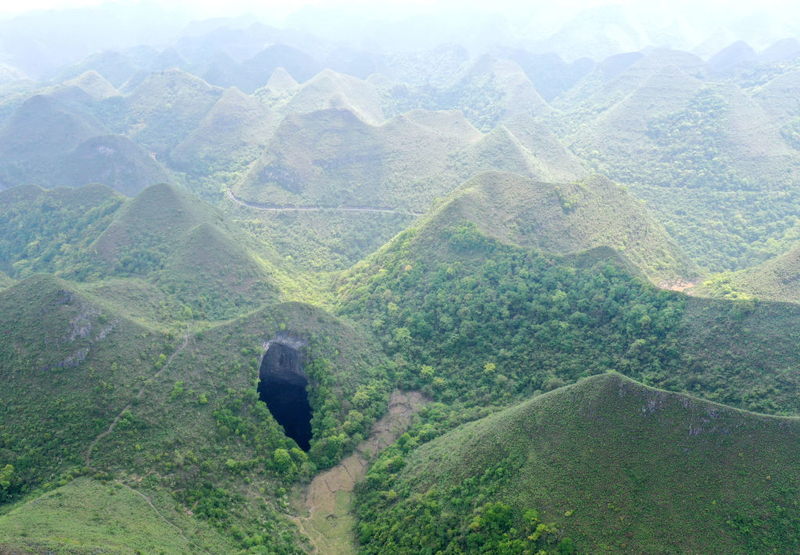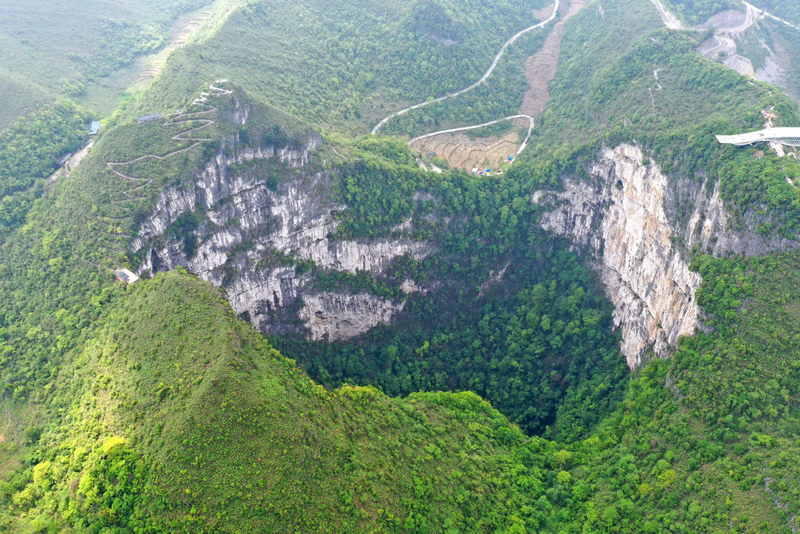
It has a depth of 630 feet, three cave entrances, as well as ancient trees that stand at 131 feet tall. This marvelous discovery was made by a team of speleologists and spelunkers who rappelled into the chasm.
Southern China has karst topography, which is prone to dramatic sinkholes and otherworldly caves, so the discovery comes as no surprise. It is located near Ping’e village of Leye county, in Guangxi Zhuang Autonomous Region. There have so far been 30 sinkholes discovered in Leye. Numerous caves, sinkholes, fissures, and underground streams characterize this landscape.

“I wouldn’t be surprised to know that there are species found in these caves that have never been reported or described by science until now,” stated George Veni, National Cave, and Karst Research Institute’s executive director. Well, we’ll be on the edge of our seats until a new species is found!
Karst topography is most common in areas with abundant rainfall and bedrock that is easily dissolved, such as limestone or dolomite. Rainwater trickles rushes, and flows through bedrock cracks, gradually expanding them into tunnels and voids. If a cave becomes too large, its ceiling could…cave in (pun intended) and collapse, which in turn creates a sinkhole. You can walk out on the karst in other parts of the world and not notice anything. Sinkholes can be small, measuring only a meter or two across. Cave entrances may be quite small, so you’ll have to squeeze through. In fact, karst or pseudokarst makes up about 20% of the world’s landmass.